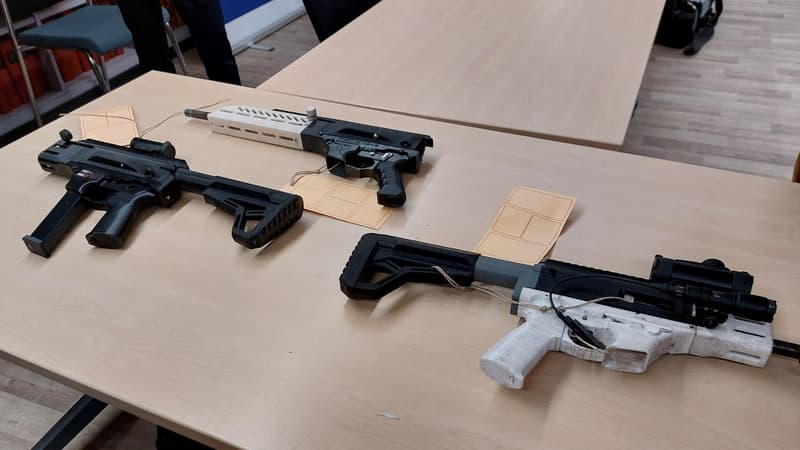Soon the end of homemade guns? According to the British media registration, Thingiverse, a platform that offers the most popular printable 3D models, has banned models of firearms, at the request of the Manhattan district prosecutor.
A decision that responds to the appearance of “ghost weapons” (or “ghost gun”), firearms created in part or from scratch with a 3D printer. The name of “ghost” comes from the fact that these weapons do not have a standard number, despite their lethal nature. Therefore, they are intraçable and within reach of (almost) all the owners of 3D printers.
Of “liberator” to a proliferation
“Liberator” is the name of the first almost comprehensive 3D gun, democratized in 2013. Five days after the publication of the weapon plans on the Internet, almost 100,000 people downloaded them. If at the beginning of 3D printing, it was tempting to experience the limits of printed objects, today such weapons are perfected and can represent a real threat.
Today we find them mainly in 3 different ways:
- Completely designed weapons using a 3D printer, which can generally draw a single blow and are subject to a risk of explosion in the user’s fingers;
- Hybrid weapons, partially designed with 3D printer, but also contain certain metal parts, easily found in traditional stores;
- Weapons of “completion kits”, partly designed with a 3D printer, but also contain certain classic weapons parts, are the most reliable so dangerous.
For a decade, we have been witnessing a proliferation. 45,240 homemade firearms were reported (many of which were produced by 3D printers) between 2016 and 2021 in the United States, according to the United States Ministry of Justice. Between 2020 and 2024, the number of guns printed, seized by the New York Police, even tripled (from 150 to 450), according to ABCNews.
In this sense, the US government, still under Joe Biden, had established a regulation on the 3D impression of firearms: each spare part must include a serial number. However, the measurement is still difficult to effectively, provided that the weapon is not controlled. In December 2024, Luigi Mangione had used a ghost gun to shoot Brian Thompson, former director of UnitedHealthcare.
Thingiverse shows the example
In a press release, Thingiverse explains that he does not want to become “an alternative that allows people to avoid firearms laws.” Therefore, the site did the great cleaning. It no longer offers any 3D printable model “integral firearms”, “chimney” or “accessories that increase the lethality/efficiency” of a weapon.
Thingiverse has announced that he wanted to moderate this restriction to help “a combination of automated tools and human review.” There are only a few elastic guns or non -functional replicas on the site.
In addition, without a detailed user manual, such weapons could be dangerous for the user. Like the liberator, a gun printed completely in plastic, which presents a high risk of explosion.
Does the measurement prevent a very special to build a gun? In any case, alternatives exist on the Internet. Alvin Bragg, the Manhattan district prosecutor behind the agreement with Thingiverse, has banned his fighting models. The American wrote to several 3D printing companies with the intention of prohibiting weapons in consumer structures.
A transmission that affects France
Although the phenomenon exploded first in the United States, it gradually exports to France. In February 2024, a network of arms manufacturers designed with 3D printers was dismantled in the VAR. Fourteen people between 18 and 35 have built a design and resale market in France and Belgium. They marketed their weapons between 1,000 and 1,500 euros per unit, 4 times cheaper than conventional weapons in the dark network.
The phenomenon comes to occupy certain resale platforms. Printed weapons have been discovered for sale in the kit in Vind by French Gendarmes.
Source: BFM TV


